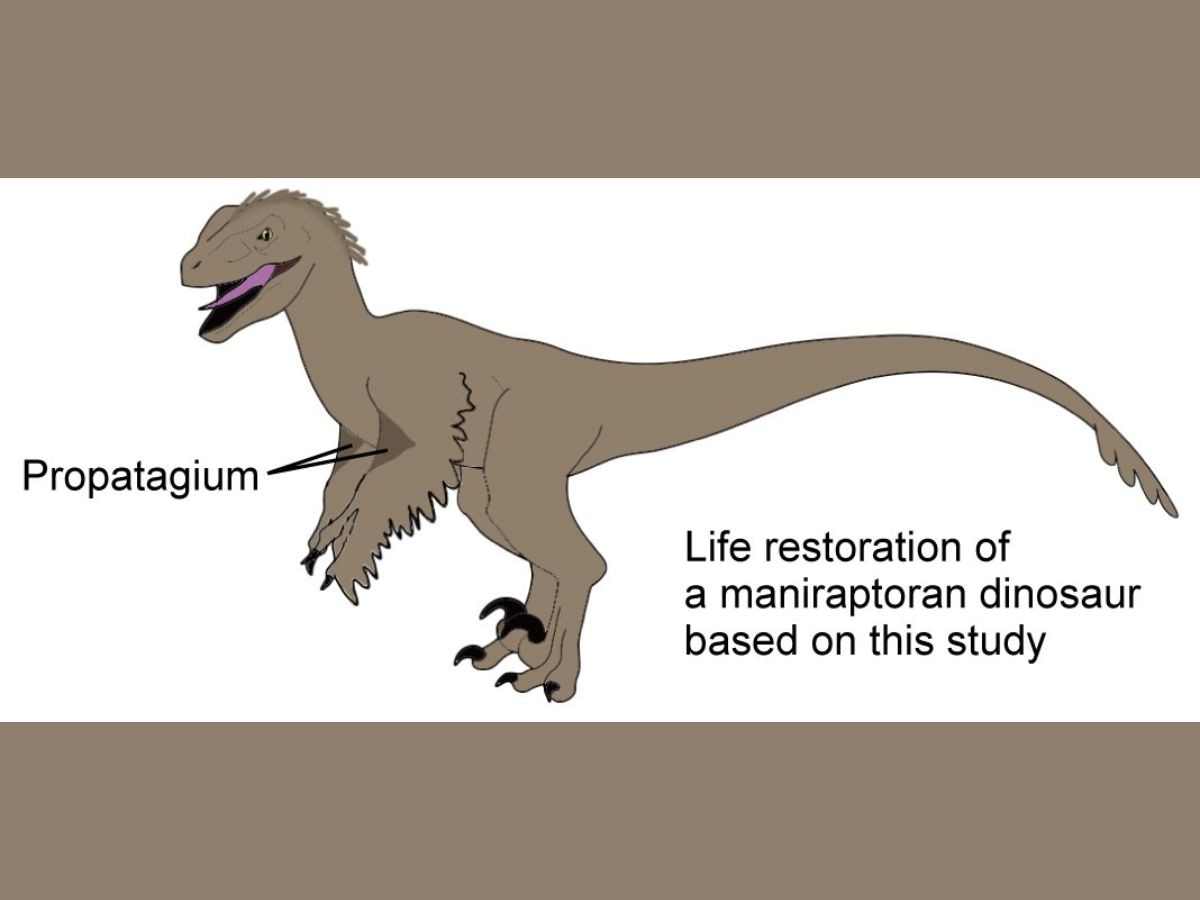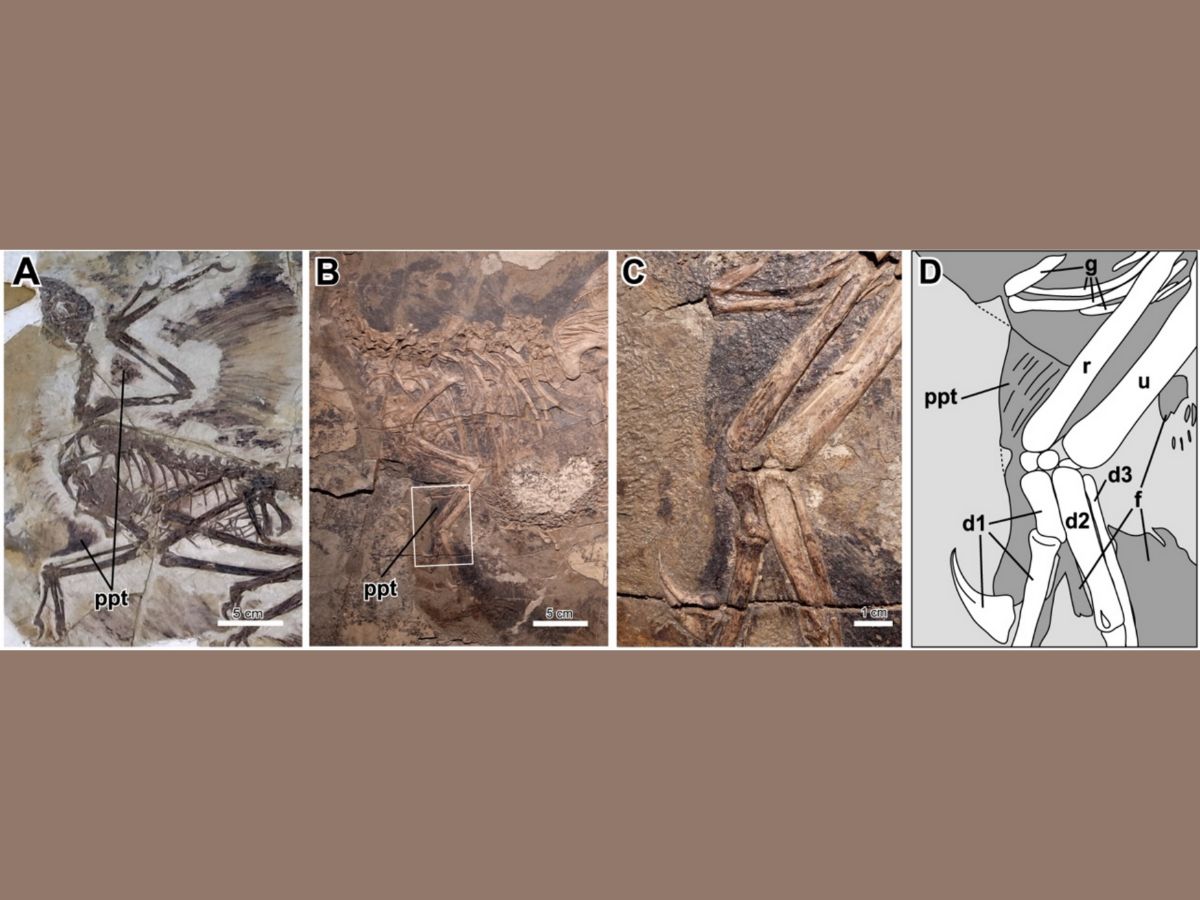How Did Birds Get Their Wings? Study Finds New Clues To Old Mystery
Propatagium is a structure which enables modern birds to fly. As part of the new study, the researchers found evidence of dinosaurs in which this structure evolved.

Modern birds which could fly have a specialised wing structure which makes them capable of flight. This structure is called propatagium, the evolutionary origin of which has remained a mystery. The structure evolved from non-avian dinosaurs, according to a new study published in the journal Zoological Letters.
Researchers from the University of Tokyo conducted statistical analyses of arm joints preserved in fossils in order to fill some gaps in knowledge about the origin of bird flight.
It is a widely known fact that modern birds evolved from certain lineages of dinosaurs that lived millions of years ago. This is what has inspired researchers to study dinosaurs to explain some of the features unique to birds. These features include features and bone structure.
The researchers at the University of Tokyo were intrigued by propatagium, and decided to study it carefully to understand its evolutionary origin.
In a statement released by University of Tokyo, Tatsuya Hirasawa, one of the authors on the paper, said at the leading edge of a bird's wing is a structure called the propatagium, which contains a muscle connecting the shoulder and wrist that helps the wing flapping and makes bird flight possible.
He also said that propatagium is not found in other vertebrates, and is also found to have disappeared or lost its function in flightless birds. This is one of the reasons researchers know that propatagium is essential for flight.
Hirasawa explained that in order to understand how flight evolved in birds, it is important to know how propatagium evolved. This is what prompted the team to explore some distant ancestors of modern birds, theropod dinosaurs.
What are theropods? Did they have wings?
Theropods were flesh-eating dinosaurs and the most diverse group of saurischian or "lizard-hipped" dinosaurs. Some common examples of theropods are Tyrannosaurus rex and Spinosaurus aegyptiacus.
Theropods had arms, not wings, which is why the scientists decided to find evidence of an early example of the propatagium in these dinosaurs, and understand how the modern avian branch of the tree of life transitioned from arms to wings.
Why is it difficult to find the evidence of propatagium in dinosaurs?
However, propatagium is made up of soft tissues, as a result of which it does not fossilise well. This makes it difficult to find evidence of the structure in dinosaurs.
Therefore, the researchers used an indirect method to identify the presence or lack of a propatagium in a specimen.
Yurika Uno, the lead author on the paper, said the solution they came up with to assess the presence of a propatagium was to collect data about the angles of joints along the arm, or wing, of a dinosaur or bird.
Uno explained that in modern birds, the wings cannot fully extend due to the propatagium, constraining the range of angles possible between connecting sections. If a similarly specific set of angles between joints could be found in dinosaur specimens, researchers could be fairly sure that the dinosaurs too possessed a propatagium.
Through quantitative analyses of the fossilised postures of birds and non-dinosaurs, the researchers found the tell-tale ranges of joint angles they hoped to.
In which dinosaur group did propatagium evolve?
Using the clue, the researchers found that the propatagium likely evolved in a group of dinosaurs known as the maniraptoran theropods. This group included the famous Velociraptor.

Maniraptoran theropods were dinosaurs closer to birds than to ornithomimids, and lived on Earth about 150 million years ago, in the Jurassic Period. Ornithomimids were theropod dinosaurs that show a good example of convergent evolution with the ratite birds, such as ostriches.
Propatagium was also identified in Caudipteryx and Microraptor
The fact that the propatagium likely evolved in maniraptoran theropods was backed up when the researchers identified the structure in preserved soft tissue fossils, including those of the feathered oviraptorosaurian Caudipteryx and the winged dromaeosaurian Microraptor.

Oviraptorosaurs were different from most other theropods because of their deep belly, and a short, stiff tail. They were closely related to birds. Dromaeosaurs were feathered theropod dinosaurs, and are also known as 'running lizards'.
The specimens in which the researchers identified the propatagium existed prior to the evolution of flight in that lineage.
What is next?
The study is important because now it is known when the propatagium came into being, and leads researchers on to the next question of how it came to be.
According to the authors, it could be difficult to answer why these particular theropod species needed a structure like propatagium to better adapt to their environment.
In order to obtain clues to this mystery, the researchers have started exploring possible connections between the fossil evidence and embryonic development of modern vertebrates. The team believes that some theropods might have evolved the propatagium not because of any pressure to learn to fly. This is because their forelimbs were made for grasping objects and not for flying.







































